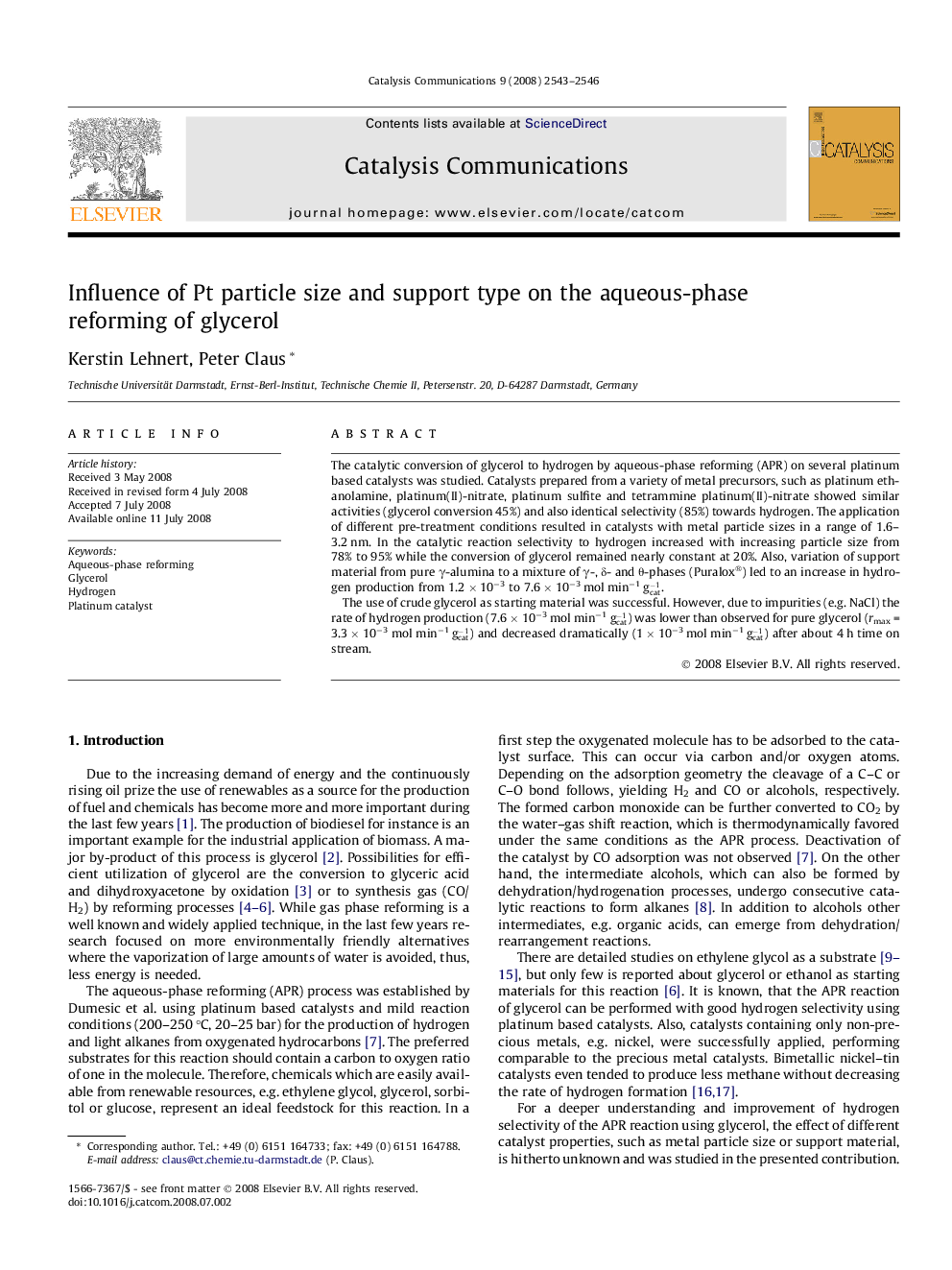| Article ID | Journal | Published Year | Pages | File Type |
|---|---|---|---|---|
| 51800 | Catalysis Communications | 2008 | 4 Pages |
The catalytic conversion of glycerol to hydrogen by aqueous-phase reforming (APR) on several platinum based catalysts was studied. Catalysts prepared from a variety of metal precursors, such as platinum ethanolamine, platinum(II)-nitrate, platinum sulfite and tetrammine platinum(II)-nitrate showed similar activities (glycerol conversion 45%) and also identical selectivity (85%) towards hydrogen. The application of different pre-treatment conditions resulted in catalysts with metal particle sizes in a range of 1.6–3.2 nm. In the catalytic reaction selectivity to hydrogen increased with increasing particle size from 78% to 95% while the conversion of glycerol remained nearly constant at 20%. Also, variation of support material from pure γ-alumina to a mixture of γ-, δ- and θ-phases (Puralox®) led to an increase in hydrogen production from 1.2 × 10−3 to 7.6 × 10−3 mol min−1 gcat-1.The use of crude glycerol as starting material was successful. However, due to impurities (e.g. NaCl) the rate of hydrogen production (7.6 × 10−3 mol min−1 gcat-1) was lower than observed for pure glycerol (rmax = 3.3 × 10−3 mol min−1 gcat-1) and decreased dramatically (1 × 10−3 mol min−1 gcat-1) after about 4 h time on stream.
